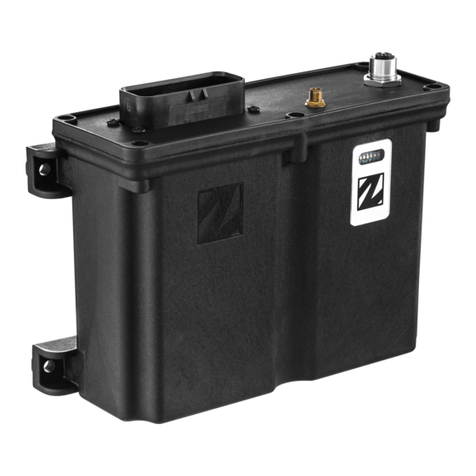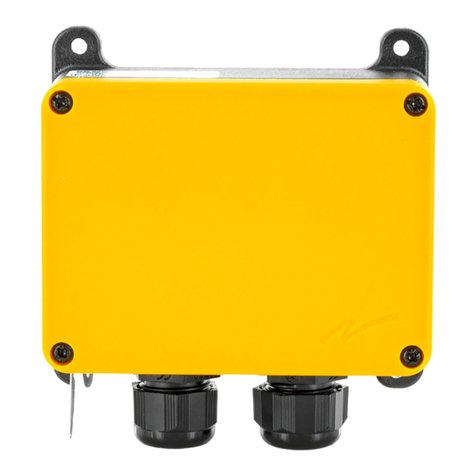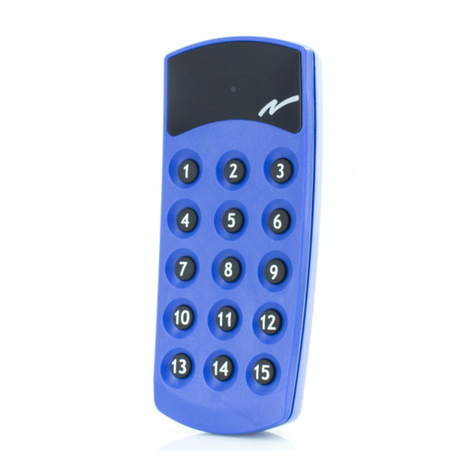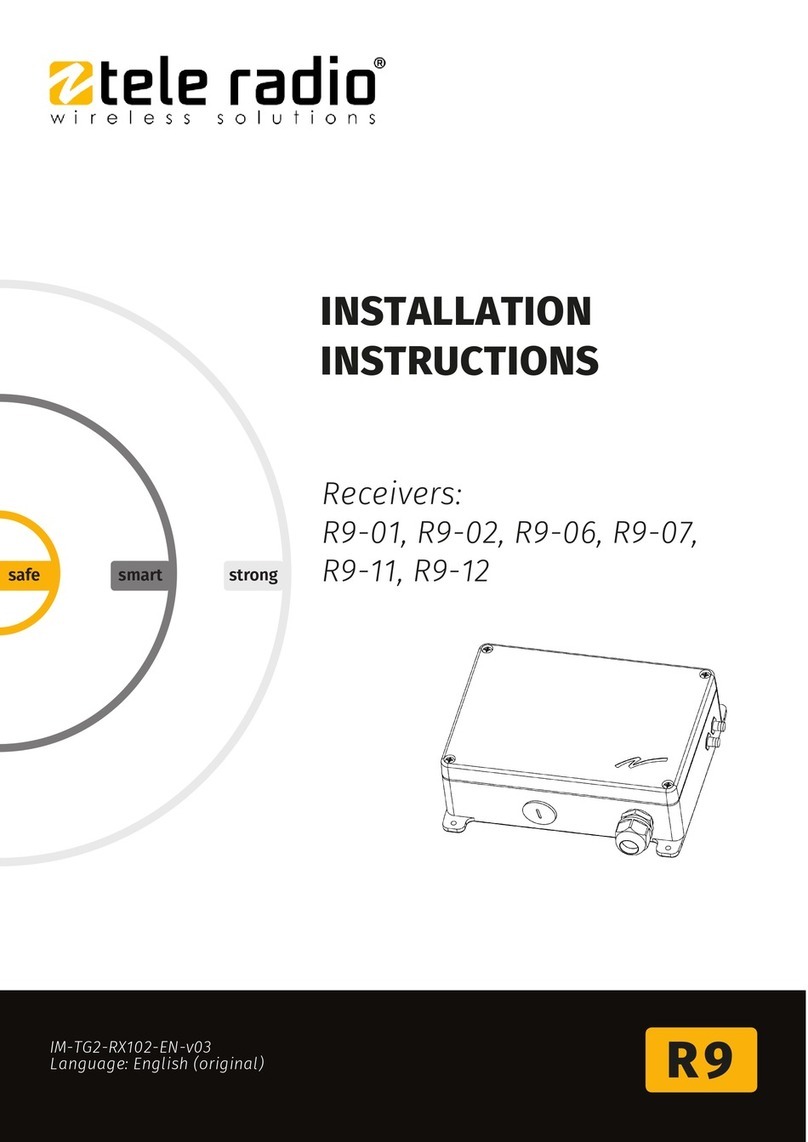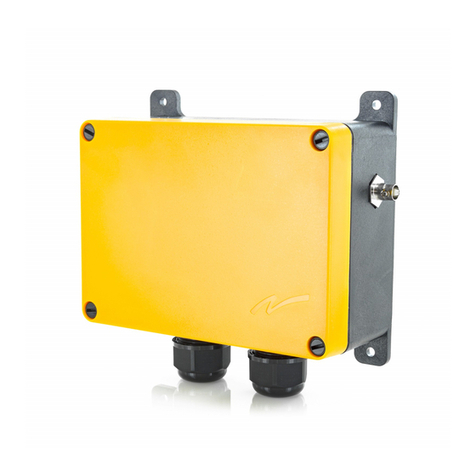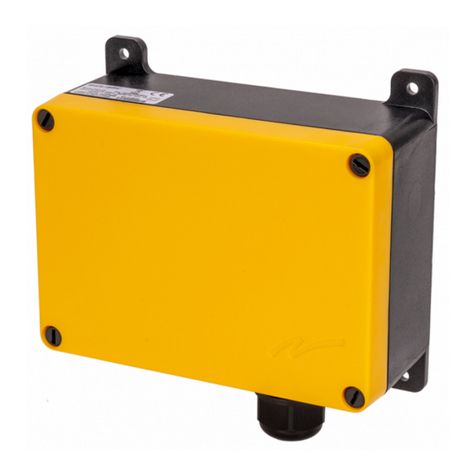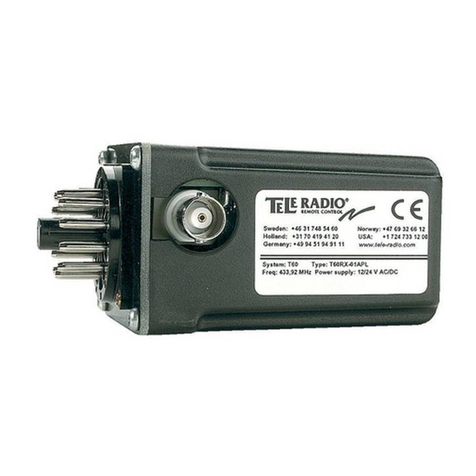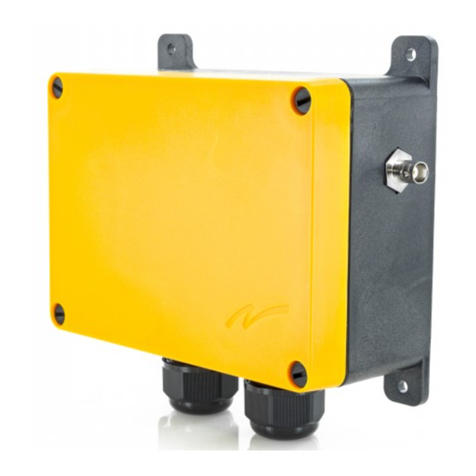
Enduser instructions│R21│Chapter 1: Introduction
1.1About this document
Before installing or operating the product, read the corresponding documentation
carefully.
Tele Radio AB's product range is composed of transmitters, receivers, and
accessories intended for use together as a system.
R21 systems are mainly intended for the hydraulic and mobile equipment markets.
These systems are not standardized but customized and adapted to each
customer's needs. How the outputs are connected to control the object depends on
each specific installation and will not be covered in this document. For exact
details, see the technical documentation provided for your specific system.
Drawings, schematics and connection diagrams are unique and are also provided
together with the system. Images shown in this document may therefore not show
the exact position of buttons, paddles and are for illustrative purposes only.
These End user instructions cover main technical specifications and standard
operating instructions.
Please report any error or omission in this document, as well as any improvement
or amendment suggestion to td@tele-radio.com.
1.1.1COPYRIGHT
Information in this document is subject to change without notice. No part of this
publication may be reproduced, stored in a retrieval system, or transmitted in any
form or by any means, electronic, photographic, mechanical (including
photocopying), recording or otherwise for any purpose other than the purchaser's
personal use without the written permission of Tele Radio AB.
1.1.2TERM AND SYMBOL DEFINITIONS
The capitalized terms and symbol used herein shall have the following meaning:
lWARNING: indicates a hazardous situation which, if not avoided, could result
in death or serious injury.
lCAUTION: indicates a hazardous situation which, if not avoided, will result in
minor or moderate injury.
lIMPORTANT: is used for information that requires special consideration.
lNOTE: is used to address practices not related to physical injury.
This symbol is used to call attention to safety messages that would be
assigned the signal words "WARNING"or "CAUTION".
6 ED-PM-RX103-EN-v03
